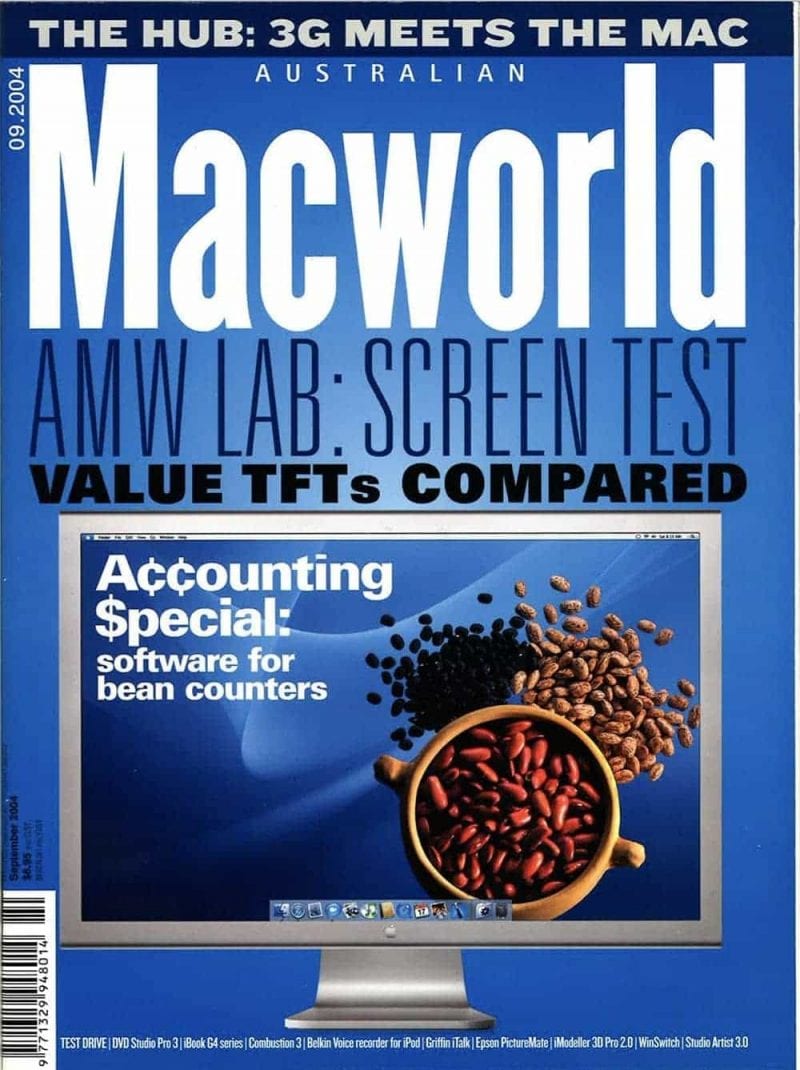
MYOB First Edge – Our original FirstEdge disc was faulty, and putting it into the Mac resulted in a kernel panic. Its replacement was visibly from a different batch, and worked properly. An installer takes care of putting the pieces in the right place, and the setup assistants work well and provide a good selection of business types that determine the list of accounts.
FirstEdge is marketed as a basic, application and all the basics are there: invoices, expenditure, Jobs ( to track income and expenses related to specific projects ), bank reconciliation and a good selection of reports including BAS preparation. It covers the basics well, and is suitable if you don’t need inventory payroll or time billing.
Invoices and other documents can be printed or faxed. PDF versions may be saved to disk or sent via your default e-mail program. Approved users can take advantage of the MYOB computer payment service – aka M-powered invoices – so their customers can pay via BPay, credit card by phone or Postbillpay. The other M-powered services are not yet offered to users of MYOB’s Mac product.
Statements from internet banking can be imported and transactions automatically matched with those you’ve entered in FirstEdge. Any remaining can be manually matched if the details were sufficiently different to confuse FirstEdge or added as new transactions. Even if you don’t use this feature, bank reconciliations are easy.
The budgeting feature lets you track your performance and allows for percentage or absolute changes from month to month: handy if you’ve set sales growth or cost reduction targets.
BAS preparation is via a separate program, which ran in Classic during our testing. (According to MYOB it should run natively, but they couldn’t identify the cause of this problem). It is very sluggish, and the setup is confusing as it is done via the calculation sheet even if you are using accounts method. The manual is good. Its written clearly, well-arranged and provides understandable examples.
As MYOB has been through so many generations of Mac software, we expected all the rough edges to have been smoother off by now, but we were disappointed. Some interface elements including the non-standard button design used in some places, stick out like sore thumbs.
The command center acts as the home page but doesn’t provide direct access to all common tasks. For example, creating an invoice means clicking Sales Register then New Sale or making a menu selection.
Whenever you want to pick from a list (of customers, for example), FirstEdge opens a new window, which means unnecessary mouse movement. There is an option to sort and select list items by name instead of number, but then you must enter the name in the number field, very strange.
Lists aren’t always filtered by type: if you’re receiving a payment for an invoice and want to select the account that will receive, the list presented includes asset, liability, income, cost of sales and expense accounts.
If you’re entering an invoice and need to create a new customer, that customer isn’t selected when you return to the invoice.
Want to use the mouse to activate calendar entry in a date field? Tough, you have to use the keyboard. FirstEdge doesn’t memorise transactions, so if you – for example – often use the same car park when you visit a client, you have to fill in the transaction details each time. Recurring transactions are supported but they seem designed to suit regular transactions such as rent payment, rather than those that are repeated ad hoc. Ask a friend that uses QUickbooks on Windows to show you how this can be implemented well. Overall, the program seems designed for the person that uses it intensively and keeps their hands on the keyboard. It is harder than necessary for someone who only enter their sales and expenditure once week and prefer to mouse around.

